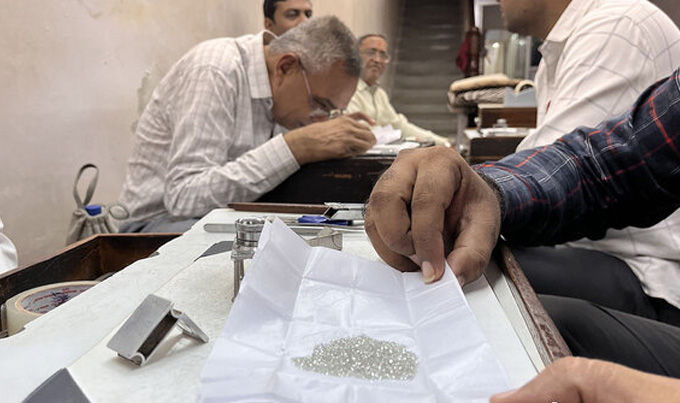The European diamond industry faces unprecedented challenges in 2025, marked by collapsing natural diamond prices, geopolitical disruptions in traditional supply chains, and surging demand for lab-grown alternatives. Here’s an analysis of the key trends reshaping the market:
1. Price Collapse and Inventory Crisis
- Natural Diamond Price Crash: European natural diamond prices have plummeted by 40% since 2023, driven by oversupply and weakening demand for luxury goods. Major miners like De Beers reported a 50% year-on-year sales decline in Q1 2025, with inventory levels reaching a 17-year high.
- Retailer Discounts: Luxury jewelers in Paris, Milan, and London slashed prices by up to 30% to clear excess stock, yet consumer interest in high-carat natural diamonds remains tepid.
2. Lab-Grown Diamonds Disrupt the Market
- China’s Dominance: Chinese lab-grown diamonds, primarily from Henan province, now account for 56.8% of Europe’s diamond market share. Brands like Zheguang ZG DIAMOND offer 1ct lab-grown stones with D-color and VVS clarity for under €1,000, undercutting natural diamonds by over 80%35.
- Shifting Consumer Preferences: Younger buyers increasingly prioritize sustainability and affordability. Lab-grown diamond sales in Germany and Scandinavia surged by 45% in Q1 2025, driven by custom engagement rings and fashion jewelry.
3. Geopolitical Tensions and Supply Chain Fragmentation
- Sanctions and Russian Diamonds: Despite EU sanctions on Russian diamonds, loopholes persist. Belgian imports of Russian rough diamonds rose to €639 million in June 2024, as traders rerouted shipments through Middle Eastern hubs like Dubai.
- Ethical Certification Push: European jewelers now demand blockchain-tracked diamonds to comply with G7 sanctions. However, enforcement remains inconsistent, with up to 20% of “conflict-free” certifications suspected of fraud.
4. Industry Adaptation and Survival Strategies
- Luxury Brands Pivot: Cartier and Tiffany & Co. launched hybrid collections combining natural and lab-grown diamonds, targeting mid-range buyers. These lines contributed to 12% of their Q1 revenue68.
- Mining Consolidation: De Beers and Alrosa merged their European distribution networks to cut costs, while closing mines in Botswana and Canada to reduce output.
5. Outlook: A Bifurcated Future
- Natural Diamonds: High-end auction houses like Sotheby’s report stable demand for rare colored diamonds and heritage pieces, but mass-market natural stones face obsolescence.
- Lab-Grown Expansion: Analysts predict lab-grown diamonds will capture 70% of Europe’s engagement ring market by 2026, with Henan-based producers investing €200 million in German and Italian retail partnerships.
Conclusion
Europe’s diamond market is undergoing a seismic shift. While natural diamonds struggle under geopolitical and economic pressures, lab-grown alternatives—led by China’s cost-efficient producers—are redefining luxury. For traditional players, survival hinges on ethical sourcing, hybrid innovation, and embracing the irreversible rise of synthetic gems.
